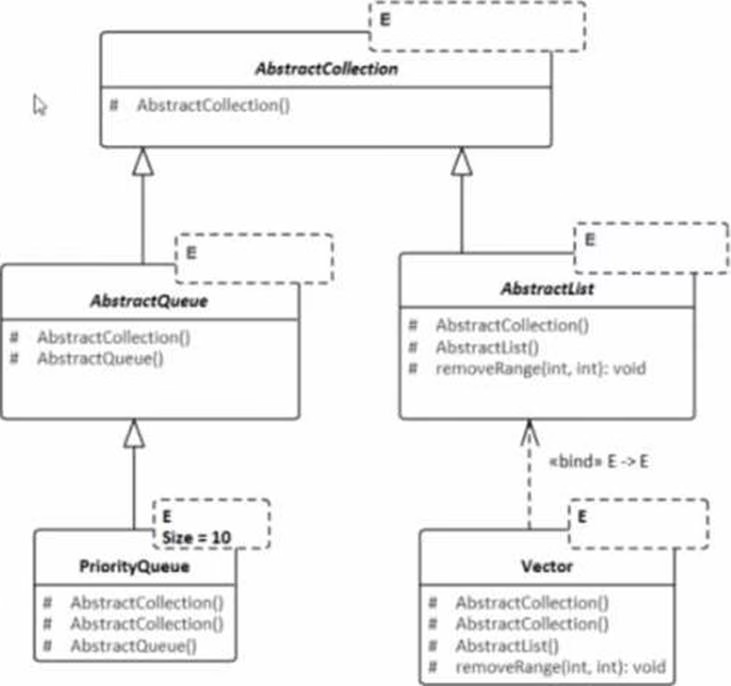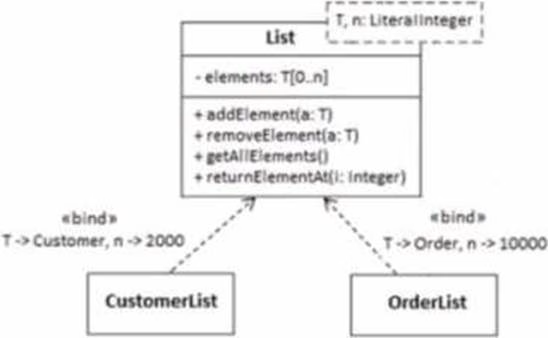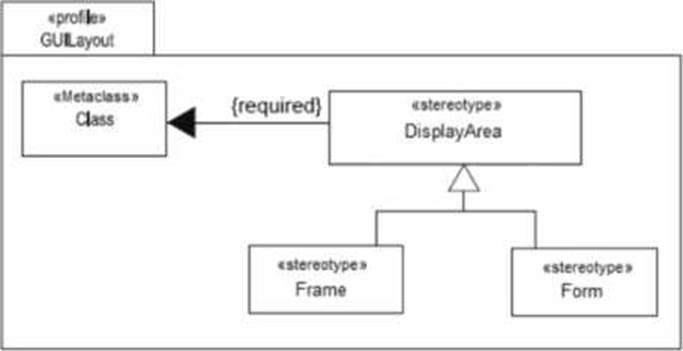OMG OMG-OCUP2-ADV300 OMG Certified UML Professional 2 (OCUP 2) – Advanced Level Online Training
OMG OMG-OCUP2-ADV300 Online Training
The questions for OMG-OCUP2-ADV300 were last updated at Dec 21,2025.
- Exam Code: OMG-OCUP2-ADV300
- Exam Name: OMG Certified UML Professional 2 (OCUP 2) - Advanced Level
- Certification Provider: OMG
- Latest update: Dec 21,2025
Which feature of a UML model element could NOT be adapted by a Stereotype?
- A . Notation could be changed.
- B . Constraints could be added
- C . Constraints can be removed.
- D . Attributes and Operations could be added.
A framework developer has been given a requirement to create an extensible utility for solution developers to use to create collections.
The framework developer has submitted the following diagram fragment for review:

Which review comment is valid and applicable?
- A . The upper limit of 10 for the Size of PhontyQueue is too small and should be increased to at least 20 to accommodate special cases.
- B . The «bind» relationship between the concrete class Vector and the abstract class AbstractList is incorrect. It should be a Generalization relationship.
- C . The Generalization relationship between the concrete class PriorityOueue and the abstract class AbstractQueue is incorrect. It should be a «bmd» relationship.
- D . The template parameter Size cannot be added to a specialized class. It needs to be moved to the top of the hierarchy and added to AbstractCollection and AbstractQueue.
Which statement should be taken into consideration when extending a UML metaclass with a stereotype?
- A . UML recommends to start extending the metaclass "Class" and then other metaclasses depending on the expected qualities of the profile.
- B . The choice of the extended metaclass is not that important since tools can always apply a profile’s filtering rules to hide unneeded metaclasses.
- C . The metaclass and the stereotype that extends it should be semantically related to each other to avoid having to constrain the metamodel excessively.
- D . UML specifies rules on how the mapping between stereotypes and UML metaclasses should be done; these rules must be followed to identify the best metaclasses.
An organization has determined that they want to add the capability to create and add requirement elements to their UML models. They also want to create a unique relationship for tracing requirements to other model elements.
What is the appropriate approach to do this?
- A . Use the requirement element and relationship defined in the UML specification.
- B . Create a profile that stereotypes Class as requirement and Dependency as the relationship.
- C . Create a new MOF metamodel that includes UML and adds the desired requirement element and relationship.
- D . Assign tag values that ascribe the desired requirement type to a UML Requirement and Dependency relationship.
Where does UML explicitly intend String Expression elements to be used?
- A . as (he ValueSpecifications for the nameExpressions of ParameterableElements within Template specifications
- B . as the model the author chooses for the specification of custom dynamically-generated names for any NamedElement
- C . whenever an OpaqueExpression form of a ValueSpecification needs to specify an expression that operates on String instances
- D . The specification has no metaclass StnngExpression and so no use of StringExpression is explicitly intended.
What does the UML specification say about choosing between a MOF-based metamodel and a UML profile?
- A . It is not always clear when to use one approach over the other; this decision must be domain-specific
- B . It is always good to opt for metamodeling when the metamodel is large and the domain is inherently complex such as the database domain.
- C . Since UML extends MOF. it is always preferable to start by extending MOF and. if this turns out to be complex, then shift to extending UML.
- D . Extending UML should be favored because of the fact that there are several tools that support UML profiling, which is not the case for MOF.
Consider the following diagram fragment:

What is the signature of the class template List?
- A . List
- B . T[0..n]
- C . The ordered set {T. n: Integer}
- D . <T -> Customer, n -> 2000> or <T -> Order, n – >10000>
Consider the following profile:

Which statement is true?
- A . Each instance of Class must be linked to exactly one instance of DisplayArea, Frame, or Form.
- B . Each instance of Class must be linked to at most one instance of DisplayArea. Frame, or Form.
- C . Each instance of Class must be linked to exactly one instance of DisplayArea. Frame, and Form.
- D . Instances of Class or its subclasses do not have to be linked to instances of DisplayArea. Frame, or Form.
- E . The diagram is incorrect because a required extension cannot be applied to a stereotype inheritance hierarchy.
Which statement is correct about working with multiple profiles?
- A . The only way to integrate profiles is to merge them into one big profile
- B . Only profiles that represent the same domain can be integrated together.
- C . A profile can reuse all or parts of another profile, and extend other profiles.
- D . A profile can reuse all or parts of another profile, but cannot extend other profiles.
Which interpretation is valid when NamedElement A is the Supplier in a specialized Dependency having NamedElement B as the Client, and a Comment indicates that A and B participate in a transformation?
- A . B is the transformation Realization of A.
- B . A is the transformation Realization of B.
- C . A depends on B.
- D . A and B are part of an economic system where A consumes what B transforms.
Latest OMG-OCUP2-ADV300 Dumps Valid Version with 200 Q&As
Latest And Valid Q&A | Instant Download | Once Fail, Full Refund

